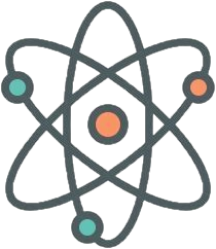
Peter Öttler
BailongBall enthusiast, trainer & TBBF board member
The Beginning
I started learning BailongBall myself in 2006 and was immediately fascinated by the focus on round movements. It was only through bailongball that I realized how important angles and corners are for the trajectory of a ball. I would like to describe the physical effects in the following lines. It is noticeable that only round movements can lead to smooth movement sequences. Especially BailongBall “Togetherness” (Game) benefits from this realization in particular.
Ich habe im Folgenden verschiedene Bewegungsangebote untersucht, um zu sehen, wie sie die runden, kreisförmigen Bewegungen darstellen. Schaut euch an, was ich gefunden habe:
General Considerations
Musculature as a complex tissue
Circular movements can activate a variety of muscles as they often involve complex movements and engage different muscle groups. Here are some reasons why such movements can contribute to the activation of many muscles:

Whole-Body Activation
Depending on the extent of circular movement, both large and small muscle groups in the body can be activated.
Stabilisation Muscles
Circular movements help to strengthen the stabilizing muscles, as they generally require good posture and balance.
Functional Training
Many everyday circular movements or those in sport reflect natural movement patterns and therefore train muscles that are important for everyday activities.
Improvement of Muscle Coordination
Regular training with circular movements can improve coordination between different muscle groups.
Therefore, circular movements can be an effective way to activate and train a variety of muscles in the body. A varied range of movements is of great importance.

Excursion Into Physics
Centrifugal and centripetal movements are physical concepts that we encounter time and again, especially in exercise programs that aim to improve our health and well-being. Some aspects of this are explained below:
Centrifugal Movements
- Centrifugal movements refer to changes in position in which the body moves from a central axis towards the outside.
- Such movements help to mobilize the joints, stretch the muscles and promote blood flow.
- Furthermore, centrifugal movements can sharpen body awareness, improve coordination and promote general mobility.
- Examples of this are circular arm movements, upper body rotations or jumping in different directions.
Centripetal Movements
- In contrast, centripetal movements are defined by a movement of the body towards the central axis.
- These movements have a stabilizing effect on the body, strengthen the muscles and improve balance.
- Centripetal movements also promote control over the body, posture and stability.
- Typical exercises that integrate centripetal movements are planks, Pilates exercises or balancing on one leg.
The integration of centrifugal and centripetal forms of movement within a balanced training program can contribute to the improvement of health in many ways. These movements promote flexibility, strength, stability, coordination and awareness of one's own body. It is important to perform these exercises under the guidance of a qualified trainer or in an appropriate sports and training environment in order to prevent injuries and optimize health benefits.
So much for muscles and physics. But what is the effect of the round? What effects do round or circular movements in particular have, and which areas of work but also areas of influence in daily life are affected or, better still, benefit?
Read about this and more in the second part of this multi-part blog post.
Peter Öttler
BailongBall Trainer

Immer wenn es spannend wird …..
Lieber Peter, vielen Dank für deinen überaus interessanten Beitrag mit diesen vielen Hintergrundinfos. Da ist vieles, über das ich mir noch nie Gedanken gemacht habe. Ich freue mich schon auf die Fortsetzung (Teil 2, Teil 3?).
Hallo Peter, herzlichen Dank für diese super Hintergrundinformationen!